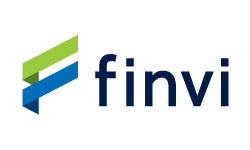Source: site

Kasasa CEO Gabe Krajicek offered the example of the “take-back loan,” a product his company designed to respond to consumers’ fear of locking up liquidity. The product lets borrowers make extra payments to pay down debt faster, while still allowing them to withdraw those overpayments later if needed — so long as the balance doesn’t exceed the original amortization schedule.
Kasasa — a financial service provider that helps small banks and credit unions offer customers more competitive products — found that 55% of people had liquidity to pay off their debt faster than required. But they didn’t take advantage because they feared an unforeseeable future liquidity crunch. “What’s nice about it is it gives them the freedom to get out of debt with reckless abandon,” Krajicek said.
Another approach is to offer flexible, tailored rewards that adapt to individual preferences. Programs that let Gen Z choose between cash, points, experiences, or digital discounts resonate more strongly than rigid, one-size-fits-all models. Beyond utility, the ability to customize rewards carries a social signal: it affirms identity and lifestyle, showing young account holders that their bank recognizes and values who they are. For example, one user might apply rewards directly to a streaming subscription, while another might choose a discount on rideshare expenses or convert points into instant cash.
Dig deeper:
Paths of Least Resistance: Emphasize Simplicity and Natural Default Behaviors
If there’s one thing traditional financial institutions have learned from fintech’s surge over the past two decades, it’s the power of simplicity. In fact, it’s a truism of e-commerce design that the path to engagement lies in providing a single compelling service — in retail financial services, this might mean buying stocks or making P2P payments — in a maximally easy and habit-forming way.
The situation has long frustrated traditional providers, whose long-established strength lies in diversified product lines. But today’s market trends may finally be tilting the field back in their favor. As younger generations, especially Gen Z, juggle increasingly complex financial needs — and consider different products to meet them — banks and credit unions have a chance to regain ground. (Many fintechs, meanwhile, are outgrowing their original value propositions and are diversifying to sustain engagement — but that’s another story.)
It’s still important for financial institutions to emulate fintechs, orchestrating hard-to-resist, habit-forming experiences at key relationship junctures. But they should also remain committed to positioning these “killer app” moments as parts of an extended engagement with their institution.
“If you ask them to do something that’s already on their path you can move the needle,” Krajicek said. “But if it’s not part of their routine, I’ve never seen it work.” For example, asking someone to swipe a debit card ten times to gain a benefit might be “on their path” but 50 times, not so much. Logging into online banking and setting up direct deposit might also qualify as routine behaviors.
The idea is to make such actions effortless and automatic. Gen Z’s tolerance for friction in banking is unusually low: A 2024 study of payments trends by EY reinforces this: Among Gen Z respondents, 39% said simply entering a PIN was a “pain point” compared with just 29% of other generations. (Interestingly, Gen Z also worries much less about data and privacy, with only 40% rating such concerns as extremely important, versus 65% of non-Gen Z respondents.)
Product designers must remain mindful of the cognitive load a Gen Z consumer bears, as their phones ping with notifications that range from urgent and important to insignificant and random. With this in mind, supporting design tactics might include:
- Defaults that lock in “set-and-forget” behaviors, or including for example surfacing direct deposit right away; and then presenting digital-wallet set-up.
- Account opening that takes less than five minutes and critical tasks that are done in one or two taps. (Institutions should track metrics like step count, completion time, and save/resume rates.)
- Disclosure statements that are delivered progressively, so choices appear only when needed. (Keep microcopy literal — e.g., “Turn on alerts” or “Add paycheck” — and confirm success instantly.)
- Log-ins and sign-ups that minimize re-keying, including by leaning on device biometrics and ensuring users can resume workflow if they switch apps.
Especially for Gen Z consumers, simplifications like these add up to less anxiety and better engagement.




